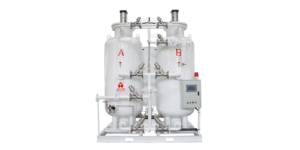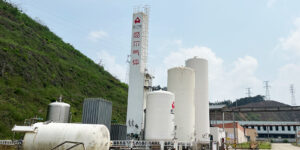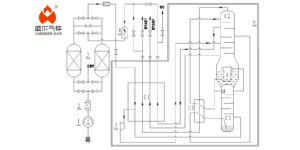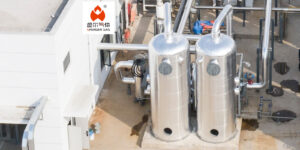In the specific installation design of air separation units, the establishment of foundations refers to the project’s civil engineering and public design. These two components are fundamental and vital for the operation of this air separation equipment. This article will provide detailed explanations of what needs to be considered for these two projects.
Civil Engineering for Air Separation Unit
Civil engineering for air separation units is a critical aspect ensuring the stable and reliable operation of equipment.
It encompasses the design and construction of factory buildings and equipment foundations, cable trenches, water trenches with embedded parts, supports, cover plates, and equipment foundations including those for distillation towers. It also includes all civil embedded parts and conduits synchronized with previous civil construction, such as cable conduits.
Design and construction of factory buildings and equipment foundations:
Consideration must be given to the weight and vibration characteristics of air separation units. Generally, reinforced concrete is commonly used due to its strength and stability, meeting the requirements of air separation units. Steel structures are also often used to support equipment and provide necessary structural support.
Design of cable trenches and water trenches: Ensure sufficient dimensions to accommodate cables and water pipes while considering drainage and maintenance convenience. Additionally, the placement of embedded parts in the trenches facilitates the installation and maintenance of subsequent equipment.
Selection of supports and cover plates: Consider corrosion resistance, fire resistance, explosion-proof properties, etc., to ensure stability in various environments.
Public Works for Air Separation Unit
Public works for air separation units are essential to ensure equipment’s normal operation. These include water supply, power supply, heating, air conditioning, ventilation, greening, fire protection, communication, hygiene, water supply and drainage, factory lighting, lifting equipment, and underground lightning protection and static electricity grounding. Among them, water circulation and power supply are crucial.
Water Circulation System
Water circulation is critical for cooling the heat generated by air separation equipment, maintaining equipment within the appropriate operating temperature range. To ensure the system’s normal operation, it must meet certain temperature, pressure, and water quality conditions. Temperature and pressure requirements typically match the specifications of equipment manufacturers to ensure normal operation and lifespan. Water quality conditions, including turbidity, pH value, Cl- content, and fouling coefficient, are also essential as they directly affect equipment operating efficiency and lifespan.
Power Supply System
A stable power supply is essential to ensure the normal operation of equipment, as various equipment and control systems in air separation units rely on electricity supply. The power supply system needs to provide stable voltage, frequency, and phase to meet the equipment’s requirements. For large-scale air separation units, high-voltage power supply systems are usually adopted to reduce transmission losses and ensure system stability. Furthermore, different equipment and systems may require power supplies of different voltage levels, making the design and management of the power supply system crucial.
The stability and reliability of the water circulation and power supply systems directly impact the production efficiency and operating costs of air separation units. Therefore, when designing and constructing these two systems, it is essential to fully consider the equipment’s characteristics and process requirements, employing appropriate technologies and materials to ensure the systems’ safe and efficient operation. Through proper planning and management, the production efficiency and economic viability of air separation units can be maximized.
Generally, the owner is responsible for the design, construction, procurement of equipment, and materials required for both projects. While the contractor should provide relevant information and cooperate accordingly. Only through mutual cooperation can the construction of air separation equipment units be optimized!








